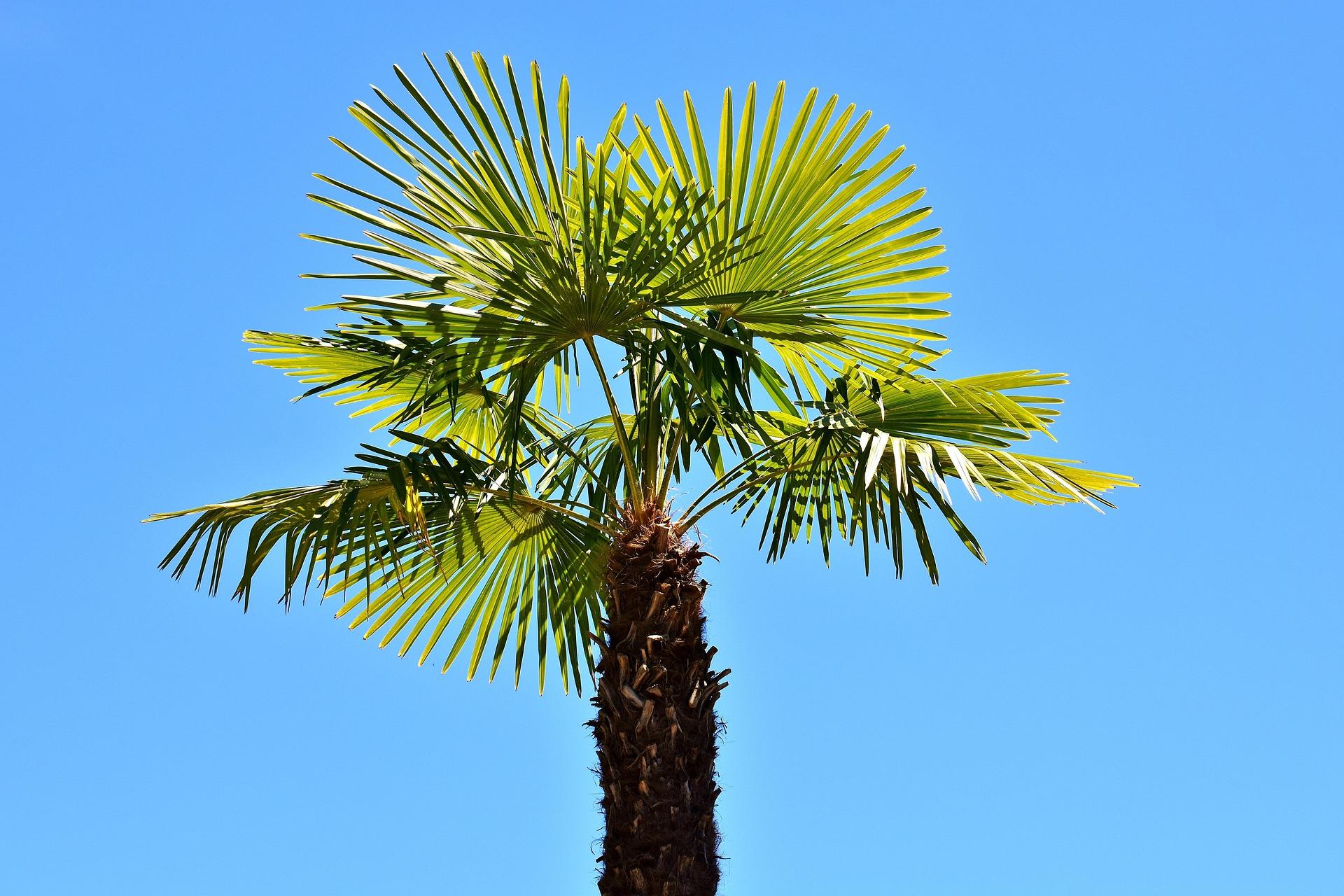Washingtonia Palm“🌴✨ The towering symbol of tropical scenery is the Washingtonia Palm.
One of the most recognizable palm trees is the Washingtonia Palm, which is frequently seen lining boulevards or standing majestically in formal gardens. Native to the southwestern United States and northwestern Mexico, it thrives in sunny, hot, and dry environments, making it perfect for desert, tropical, and subtropical landscaping.
The two most common species are:
The Mexican Fan Palm, Washingtonia robusta, has a taller, more slender trunk.
Shorter, thicker trunk for Washingtonia filifera (California Fan Palm)
Both are aesthetically pleasing, drought-tolerant, and grow quickly.
🌿 Overview of Botany
Scientific Name:
Mexican Fan Palm, or Washingtonia robusta
California Fan Palm (Washingtonia filifera)
Family: Arecaceae
Popular names include Mexican fan palm, California fan palm, and Washingtonia palm.
height:
W. robusta: 70–100 feet
W. filifera: 40–60 feet
Canopy Spread: between ten and fifteen feet
Leaves: Big, fan-shaped, with thread-like filaments, ranging in color from brilliant to bluish green
Trunk: May be smooth to fibrous, tall, and single depending on the age and trimming
Flowers: creamy-white, in lengthy, drooping clusters
Fruits: Frequently beautiful small, black berries
Sunlight and Climate Requirements
Sunlight:
Needs direct sunlight for a minimum of six to eight hours every day.
Thrives in open, clear locations
Temperature Range:
Between 20 and 45 degrees Celsius, it flourishes.
W. filifera can withstand temperatures as low as -10°C.
W. robusta can withstand temperatures as low as -6°C but is more susceptible overall.
USDA Zones:
Zones 9 through 11 for W. robusta
W. filifera: Zones 8–11
The Middle East, California, or Pakistan’s Sindh and Balochistan are ideal locations for warm, dry, and sunny weather.
💧 Water Requirements
Trees:
Water twice or three times a week to encourage root growth.
Maintain the soil somewhat moist, but not saturated.
Mature Trees:
Drought-resistant
Water every 10–14 days throughout the summer
Winter or rainy season require very little irrigation
To prevent root rot, let the topsoil dry out in between waterings.
🌱 Soil Preferences
Kind:
loamy or sandy soil with good drainage is preferred
Unless improved for drainage, stay away from heavy clay.
pH Range: 6.0 to 7.5 (neutral to somewhat acidic)
Because it can thrive in poor soil and salty environments, it is also well suited for coastal regions.
At the time of fertilization
Spring & Summer:
Use a slow-release fertilizer with magnesium, potassium, and manganese or a fertilizer made specifically for palms.
Use it every two to three months.
Autumn:
When development slows, reduce feeding.
🧪 Yellowing leaves or ragged ends can result from a potassium or magnesium deficiency.
✂️ Pruning and Upkeep
When to prune: either late spring or early summer
Tips on How to Prune:
Cut out any dead, brown, or drooping fronds, but not the green ones.
To prevent injury, use clean, sharp instruments.
When cutting, always leave a “”skirt”” of healthy fronds near the top for nutrition and protection.
Does it clean itself?
Old fronds fall off course for W. robusta.
Unless trimmed, W. filifera maintains a “”petticoat”” of dead fronds.
⚠️ Don’t prune too much; palm trees require healthy fronds to flourish.
Techniques for Reproduction
Seeds:
The most prevalent technique
Before planting, soak seeds for 24 to 48 hours.
In three to eight weeks, germinate in warm, damp soil.
🌱 When seedlings reach a height of 6 to 12 inches, transplant them.
🐛 Pests & Diseases
Usually resistant to pests, although potential problems include:
Palm weevil
Insects that belong to the order Hemiptera and are known as scale insects
mites
(Fungal) ganoderma butt rot in moist soils
Regular inspections and good soil drainage will prevent the majority of problems.
🌴 Landscape Significance and Applications
Decorative: Towering, tropical appearance; ideal for gardens, resorts, and roads
Windbreaks and shade are ideal for lining driveways or open spaces.
Used in hotels, parks, and boulevards, public areas are popular.
Religious and Cultural Significance: Employed in a few ancient rituals
📸 Quite photogenic; gives gardens more height and symmetry.
The Conclusion
The Washingtonia Palm is a beautiful, low-maintenance tree that gives any scenery an immediate tropical vibe. It is ideal for urban, desert, or coastal settings due to its sky-reaching trunk, exquisite fronds, and tolerance to heat and drought. Washingtonia palms provide lasting beauty and structure with very little maintenance, whether you’re creating a traditional tropical avenue or a contemporary garden.”
Washingtonia Palm
₨5,000.00
“The two well-known species of the **Washingtonia Palm**, often called the **Washington Palm** or **Fan Palm**, are the Mexican Fan Palm, also known as *Washingtonia robusta*, and the California Fan Palm, also known as *Washingtonia filifera*. These tall, lovely palms are native to the southwestern United States and Mexico and are commonly used in tropical and subtropical landscaping.
The tall, thin trunks and huge, fan-shaped green leaves of the Washingtonia palm are well-known. *W. filifera* is more cold-hardy and has a thicker trunk, while *W. robusta* develops quicker and higher with a thinner trunk. Both flourish in well-drained soil and direct sunlight, and are drought-resistant after they are established. They create eye-catching statement trees for boulevards, entrances, or big gardens, giving any environment a traditional tropical or desert feel.”
Related products
-
Balcony or Patio Plants
Snake Plant
Rated 0 out of 5₨600.00Original price was: ₨600.00.₨499.00Current price is: ₨499.00.





Reviews
There are no reviews yet.